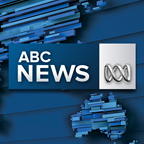
Posted
 Photo:
David Stowe says it's important to always focus on the subject's eyes. (Supplied: David Stowe)
Photo:
David Stowe says it's important to always focus on the subject's eyes. (Supplied: David Stowe)
They say never work with children or animals, but David Stowe has built his career doing both.
His "bread and butter" as a wedding photographer pays the bills, but his real passion is wildlife.
The Sydney-based photographer was a finalist in this year's Australian Geographic Nature Photographer of the Year Awards with a portrait of a family of brolgas that had just returned to their nest to settle in for the night in Victoria.
 Photo:
This brolga family portrait was a finalist at this year's Australian National Geographic awards. (Supplied: David Stowe)
Photo:
This brolga family portrait was a finalist at this year's Australian National Geographic awards. (Supplied: David Stowe)
He won the award in 2015 with an incredible symmetrical shot of a white-winged tern about to take off.
"I grew up with parents who took us camping, so I loved nature, I loved being in the bush from a very young age," Mr Stowe said.
"Just being away from civilisation and people is just my favourite place to be.
"Having my desert time is really important."
 Photo:
David Stowe's winning 2015 photo of a white-winged tern at Lake Wollumboola, NSW. (Supplied: David Stowe)
Photo:
David Stowe's winning 2015 photo of a white-winged tern at Lake Wollumboola, NSW. (Supplied: David Stowe)
Getting a lucky shot
Mr Stowe can spend hours just waiting for that winning shot.
Last week he spent days trekking through outback Queensland to try and photograph the elusive grasswren.
It's a species he had never seen before.
"They're a really hard bird to photograph and they like to hide in the undergrowth," he said.
"To go all the way to Mount Isa, to see it pop up after waiting for hours and hours and days waiting was pretty amazing.
"Part of the challenge of being a wildlife photographer is capturing a species that isn't photographed very often.
"They're more of a challenge but a bit more of a reward."
Having the right gear
While Mr Stowe said he regularly took landscape snaps on his smartphone while out in the bush, he had invested in the top equipment to help him capture his beautiful frames.
His camera body cost about $8,900, can shoot 14 frames per second and is water and dust proof.
Wildlife photography tips
- Technically know how to use your camera — know how to get the exposure correct.
- The "golden hours" are best for lighting — early morning or late afternoon.
- Composition — most people just zoom in and fill the frame with a bird or animal but don't leave enough room for the viewer to look around.
- Always focus on the eyes.
His telephoto zoom lens put him back $11,000.
However he encouraged budding wildlife photographers that a winning shot didn't have to come from a top-dollar camera.
"Some young guys in the Australian Geographic Nature Photography competition at the Australian Museum now, there's a junior category and some of those were taken with just a little instamatic camera with a built zoom and they're probably only $100."
Focus on the eyes
Mr Stowe's top tip for photographing wildlife is to remember that each photo needs to tell a story.
That sometimes means zooming out slightly to allow the viewer to "look around" rather than isolating the animal with a close-up shot.
 Photo:
Some animals will pose just right, while others only give you seconds to capture a top shot. (Supplied: David Stowe)
Photo:
Some animals will pose just right, while others only give you seconds to capture a top shot. (Supplied: David Stowe)
He said to always focus on the eyes no matter how small they were.
"It's all in the eyes, whether the subject is looking at the camera or not, it really engages the viewer," he said.
"You often hear bird photographers talking about the head angle and if the bird is side-on to the camera, it's easier to get the eye and beak in focus."
Topics: arts-and-entertainment, photography, animals, human-interest, sydney-2000









 Add Category
Add Category